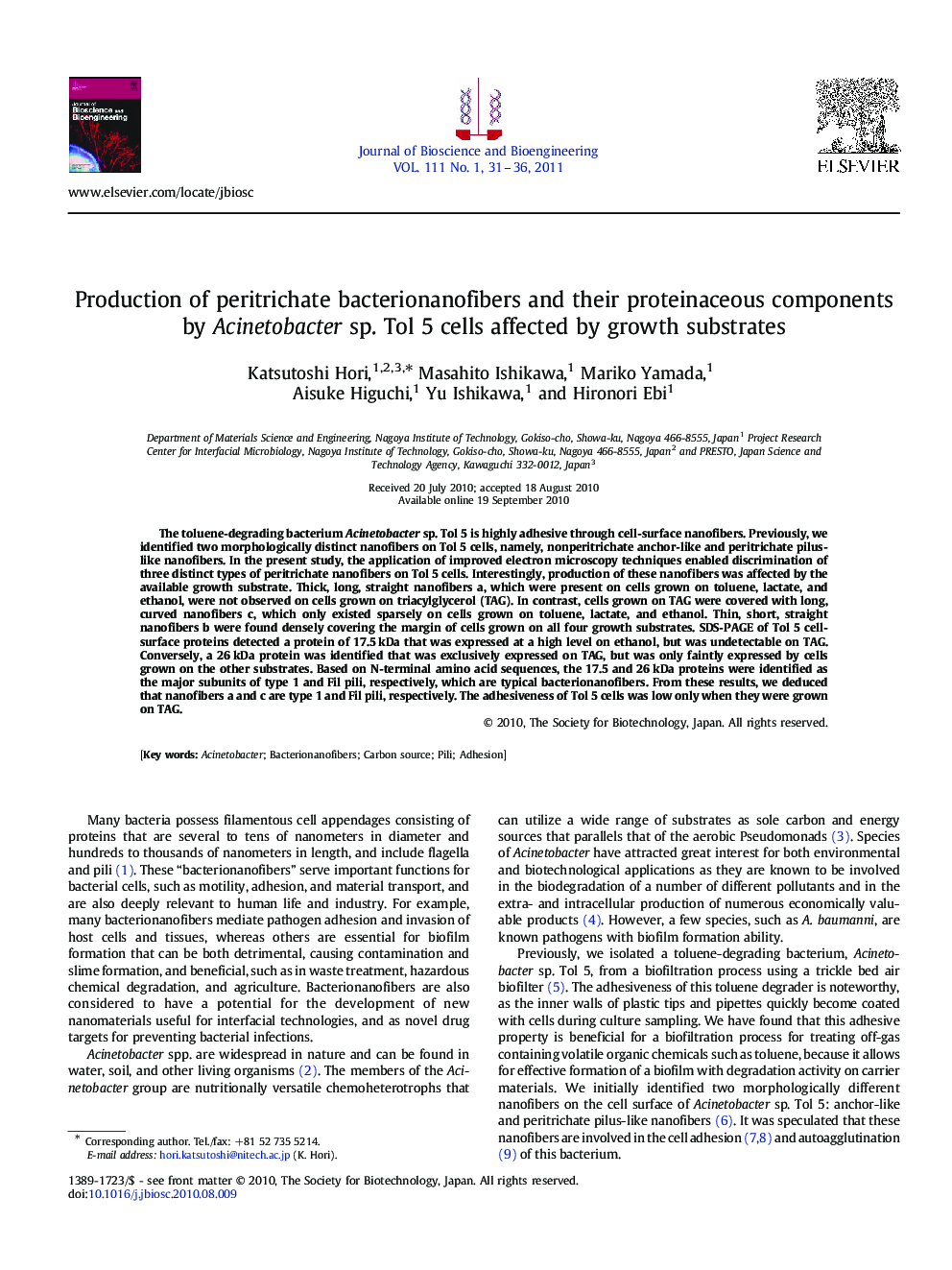| Article ID | Journal | Published Year | Pages | File Type |
|---|---|---|---|---|
| 21118 | Journal of Bioscience and Bioengineering | 2011 | 6 Pages |
The toluene-degrading bacterium Acinetobacter sp. Tol 5 is highly adhesive through cell-surface nanofibers. Previously, we identified two morphologically distinct nanofibers on Tol 5 cells, namely, nonperitrichate anchor-like and peritrichate pilus-like nanofibers. In the present study, the application of improved electron microscopy techniques enabled discrimination of three distinct types of peritrichate nanofibers on Tol 5 cells. Interestingly, production of these nanofibers was affected by the available growth substrate. Thick, long, straight nanofibers a, which were present on cells grown on toluene, lactate, and ethanol, were not observed on cells grown on triacylglycerol (TAG). In contrast, cells grown on TAG were covered with long, curved nanofibers c, which only existed sparsely on cells grown on toluene, lactate, and ethanol. Thin, short, straight nanofibers b were found densely covering the margin of cells grown on all four growth substrates. SDS-PAGE of Tol 5 cell-surface proteins detected a protein of 17.5 kDa that was expressed at a high level on ethanol, but was undetectable on TAG. Conversely, a 26 kDa protein was identified that was exclusively expressed on TAG, but was only faintly expressed by cells grown on the other substrates. Based on N-terminal amino acid sequences, the 17.5 and 26 kDa proteins were identified as the major subunits of type 1 and Fil pili, respectively, which are typical bacterionanofibers. From these results, we deduced that nanofibers a and c are type 1 and Fil pili, respectively. The adhesiveness of Tol 5 cells was low only when they were grown on TAG.
